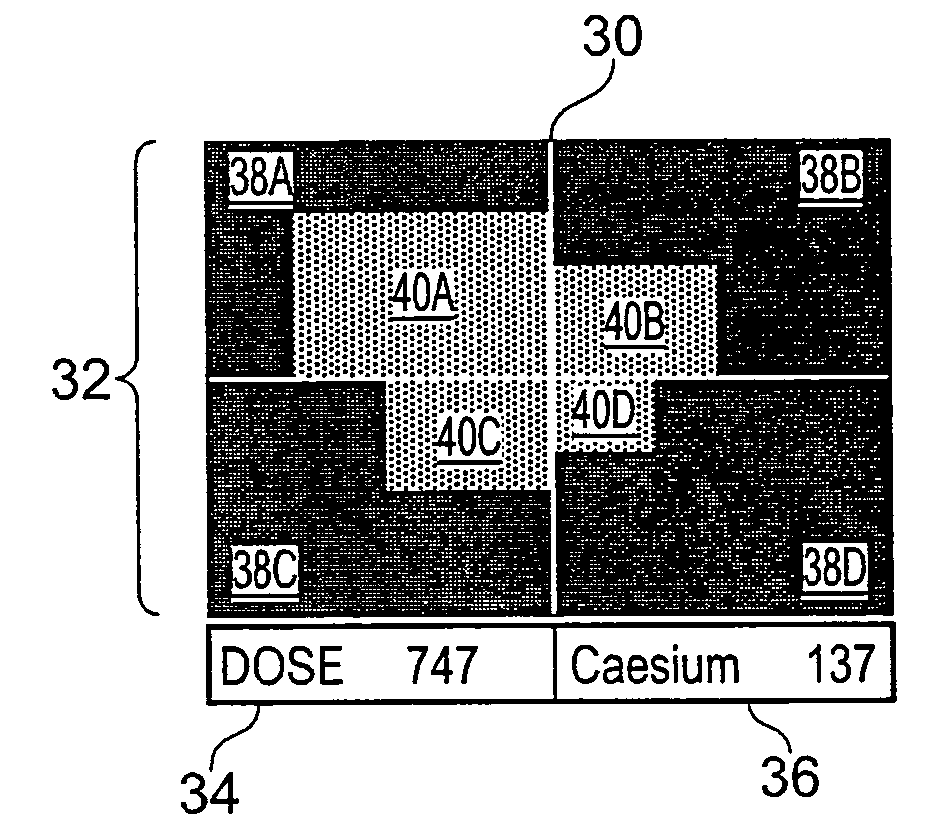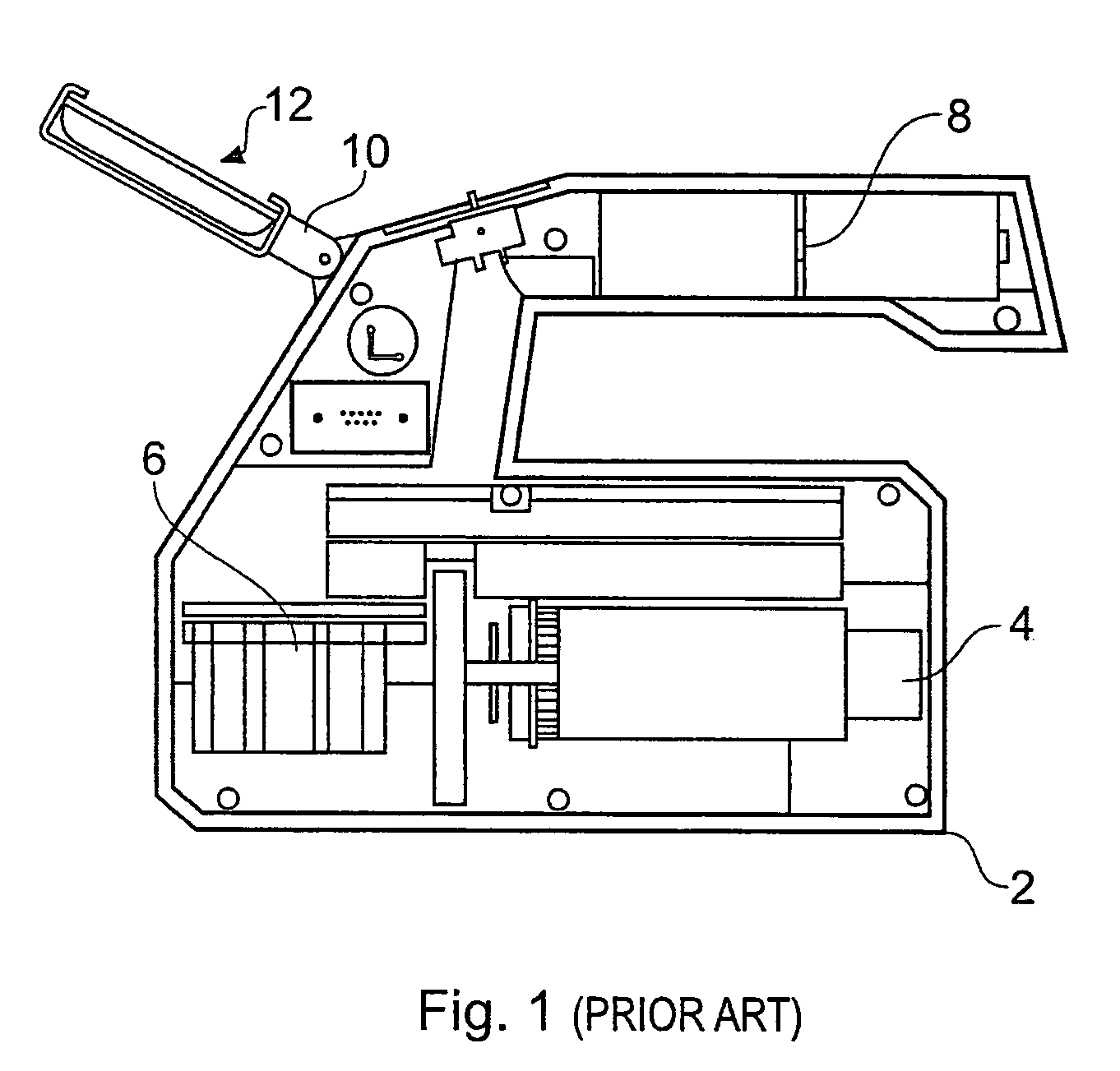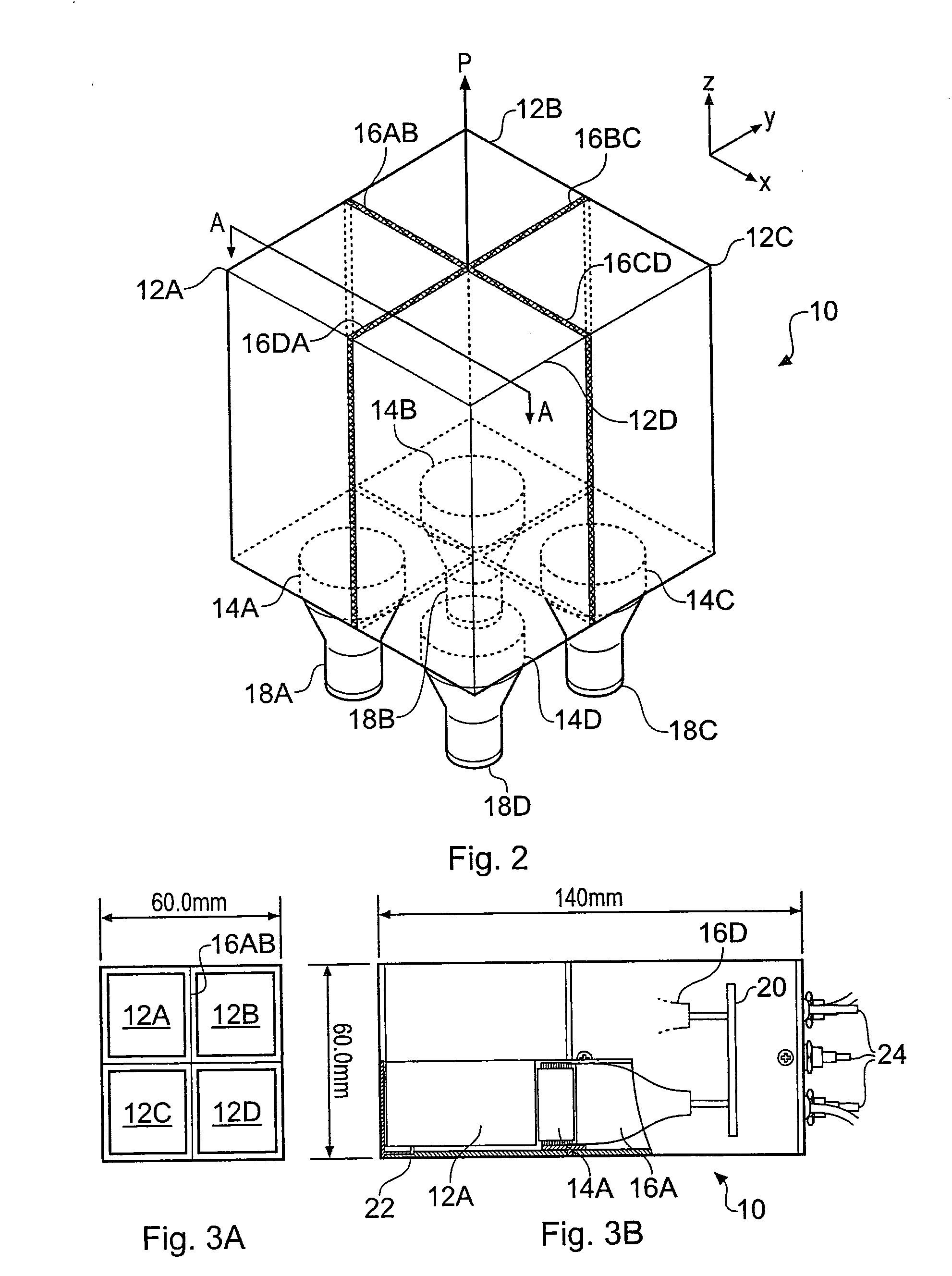Gamma-ray detector
a detector and gamma-ray technology, applied in the field of gamma-ray detection, can solve the problems of increasing the radiation exposure of the user seeking to identify, the detector is relatively heavy, and the overall complexity of the detector is increased, so as to reduce the optical crosstalk
- Summary
- Abstract
- Description
- Claims
- Application Information
AI Technical Summary
Benefits of technology
Problems solved by technology
Method used
Image
Examples
Embodiment Construction
[0029]FIG. 2 schematically shows in perspective view a gamma-ray detector 10 for determining the direction to a gamma-ray source according to an embodiment of the invention. FIG. 3A schematically shows a plan view of the uppermost surface of the detector 10 shown in FIG. 2. FIG. 3B schematically shows a partial section view of the detector 10 taken along the section AA shown in FIG. 2. The orientation of a Cartesian coordinate system used to describe some aspects of the detector is shown to the top-right of FIG. 2.
[0030]The detector 10 comprises first, second, third and fourth Thallium-doped Sodium Iodide (NaI(Tl)) crystal scintillation bodies 12A-D. The four scintillation bodies are of generally square cross-section in the xy-plane and are arranged adjacent to one another in a two-by-two square array. Each scintillation body is separated from its two immediate neighbouring scintillation bodies by layers of aluminium foil. Thus, a first layer of aluminium foil 16AB is arranged betwe...
PUM
 Login to View More
Login to View More Abstract
Description
Claims
Application Information
 Login to View More
Login to View More - R&D
- Intellectual Property
- Life Sciences
- Materials
- Tech Scout
- Unparalleled Data Quality
- Higher Quality Content
- 60% Fewer Hallucinations
Browse by: Latest US Patents, China's latest patents, Technical Efficacy Thesaurus, Application Domain, Technology Topic, Popular Technical Reports.
© 2025 PatSnap. All rights reserved.Legal|Privacy policy|Modern Slavery Act Transparency Statement|Sitemap|About US| Contact US: help@patsnap.com



